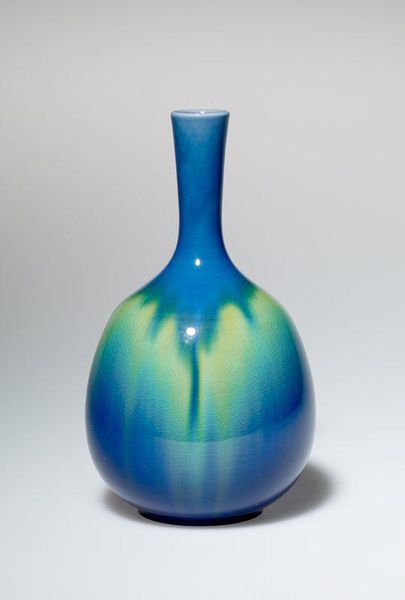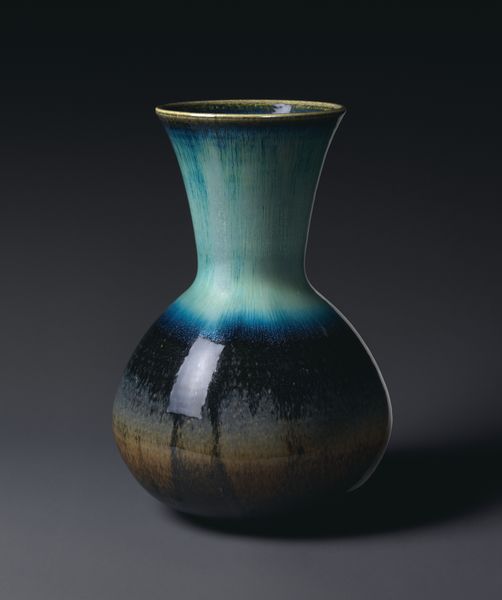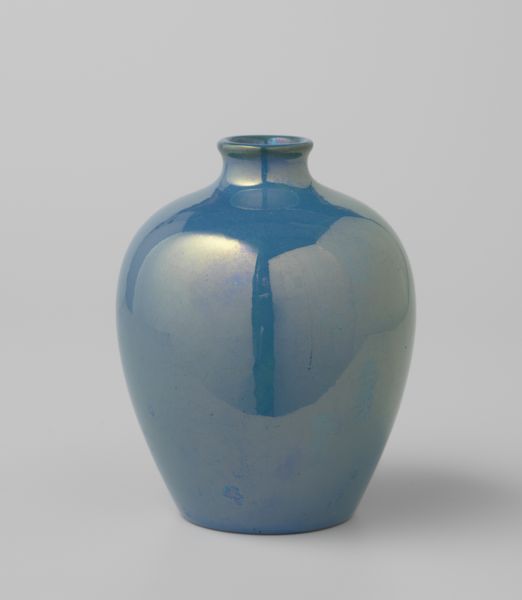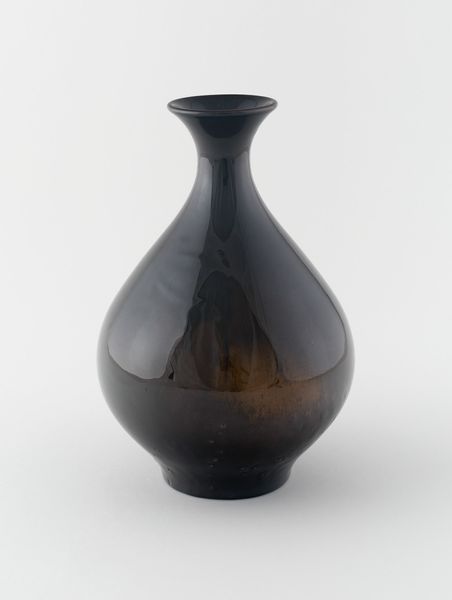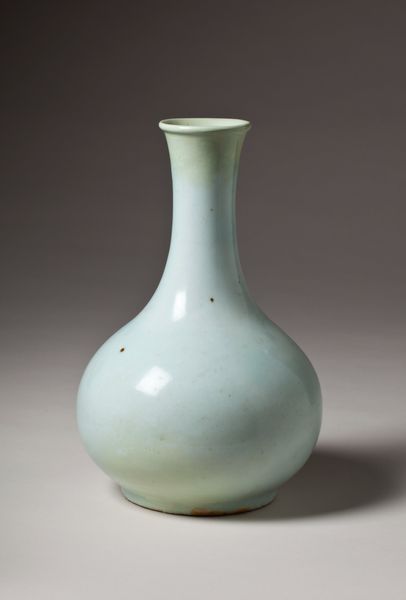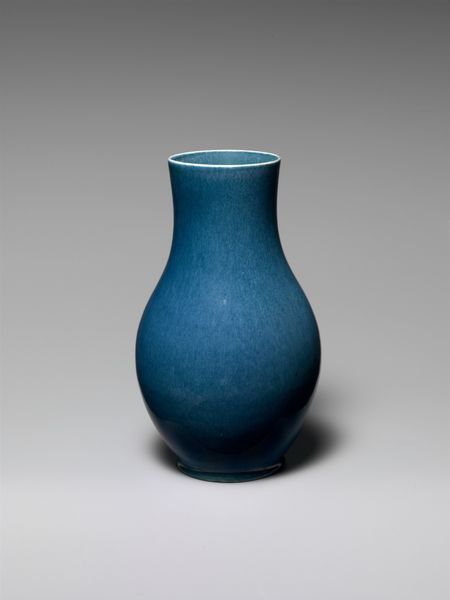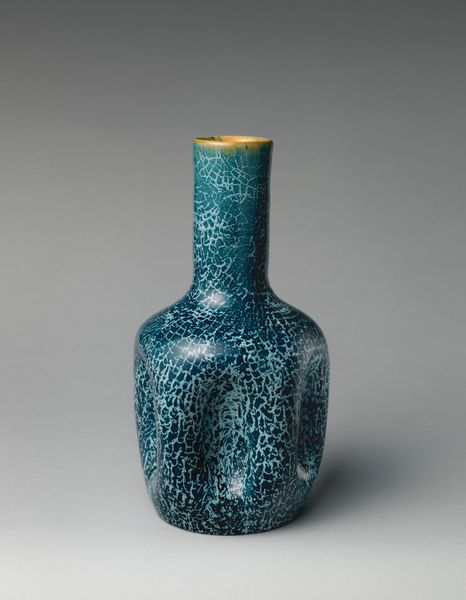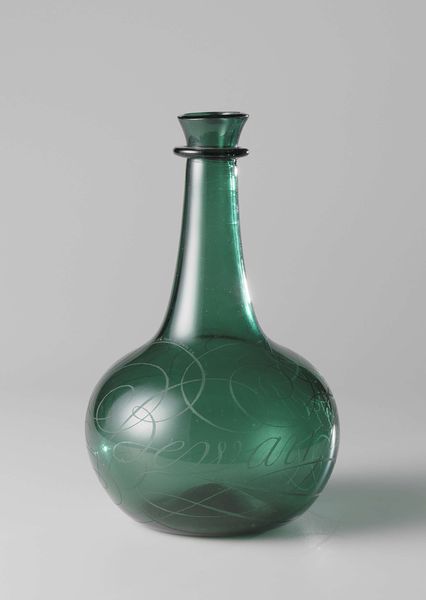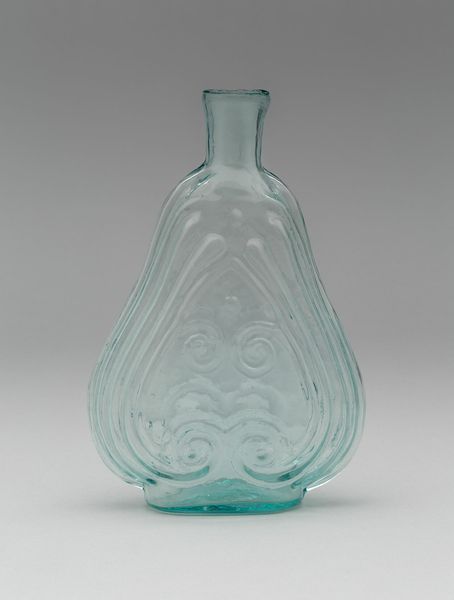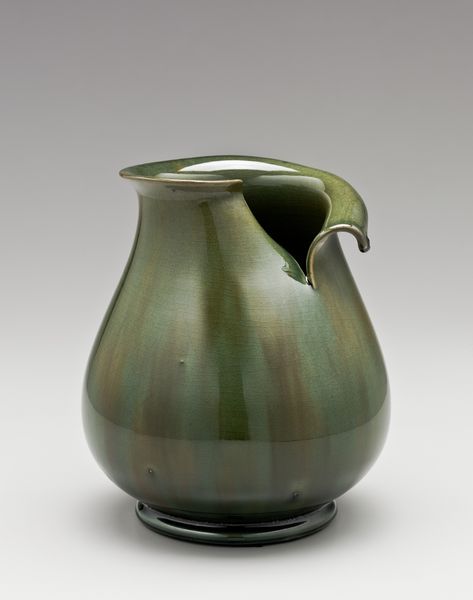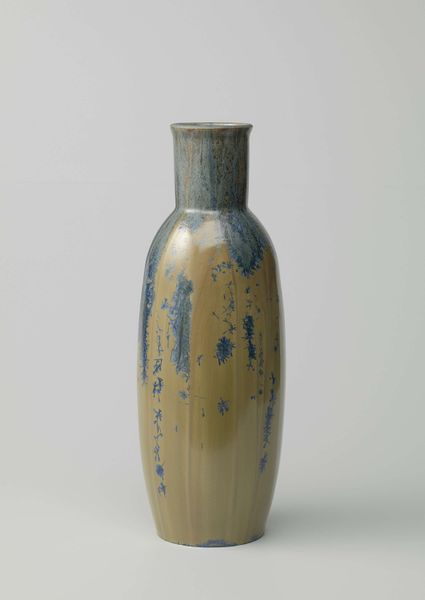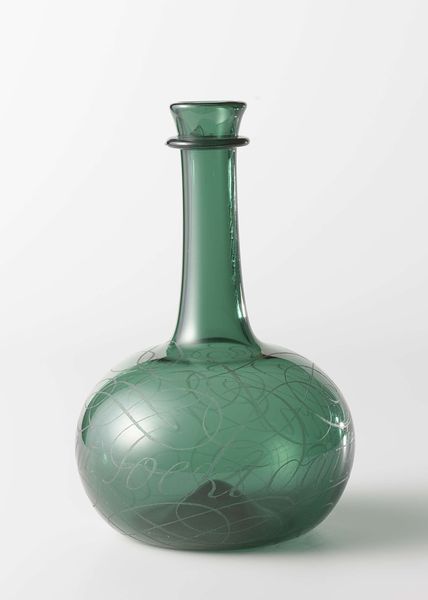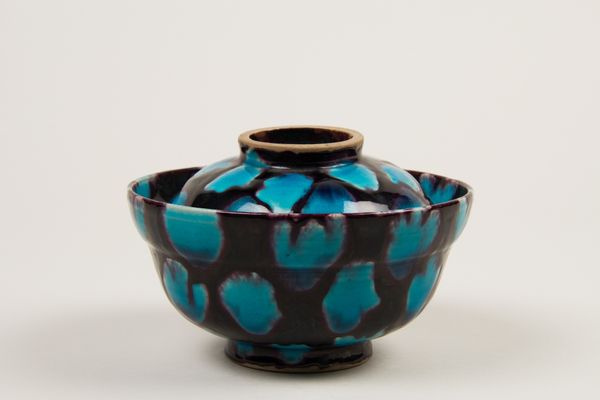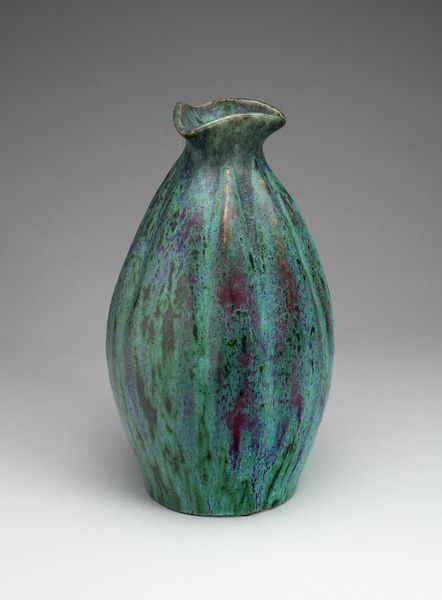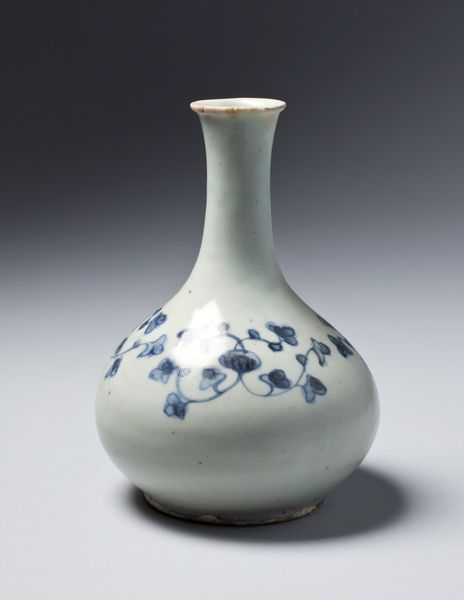
glass
#
organic
#
art-nouveau
#
glass
#
abstraction
#
decorative-art
Dimensions: 9 1/8 x 6 5/8 in. (23.2 cm)
Copyright: Public Domain
Curator: Before us, we have "Vase," a glass piece created by Louis Comfort Tiffany between 1893 and 1896, currently held in the Metropolitan Museum of Art. Editor: It strikes me immediately as something otherworldly. The colours, particularly the iridescent blues and browns, create a subtle tension. The vase almost seems to glow. Curator: That tension stems, in part, from the material properties Tiffany manipulated so brilliantly. Note the surface iridescence; that wasn’t simply applied. Instead, it’s inherent to the glass itself. Tiffany perfected techniques to achieve such effects, which allowed his pieces to seemingly generate light from within. Editor: And isn't that iridescence so very telling about its historical moment? We often forget that turn-of-the-century art, particularly the Art Nouveau movement to which this piece is affiliated, emerged during a period of immense industrial transformation and scientific breakthroughs. Consider how X-rays and new understandings of light impacted popular imagination and the aesthetic realm. Doesn’t the glow recall the excitement surrounding these revelations? Curator: Yes, but also the design itself. It exemplifies the Art Nouveau fascination with natural, organic forms, but abstractly rendered. You can see how the swirling lines evoke the feeling of plants reaching upwards without any literal representation of foliage. The shape, too—bulbous base narrowing to a slender neck—is inherently organic and satisfying, wouldn't you agree? Editor: I do, and I find myself pondering what this vase may have symbolized for its original owner. The period was marked by profound class disparity. Wouldn't this gorgeous creation, born of both craft and industrial experimentation, represent the hope of beauty available to all, even as it sat squarely in the homes of the wealthy elite? Curator: It’s certainly a poignant paradox. Considering its place within decorative art history, it beautifully illustrates the power of manipulating materials and forms to evoke complex emotions and visual pleasure. Editor: Absolutely. Viewing this object has reminded me to think critically about how even seemingly "simple" design reflects the pressing issues and latent desires of the eras that produced them.
Comments
No comments
Be the first to comment and join the conversation on the ultimate creative platform.
